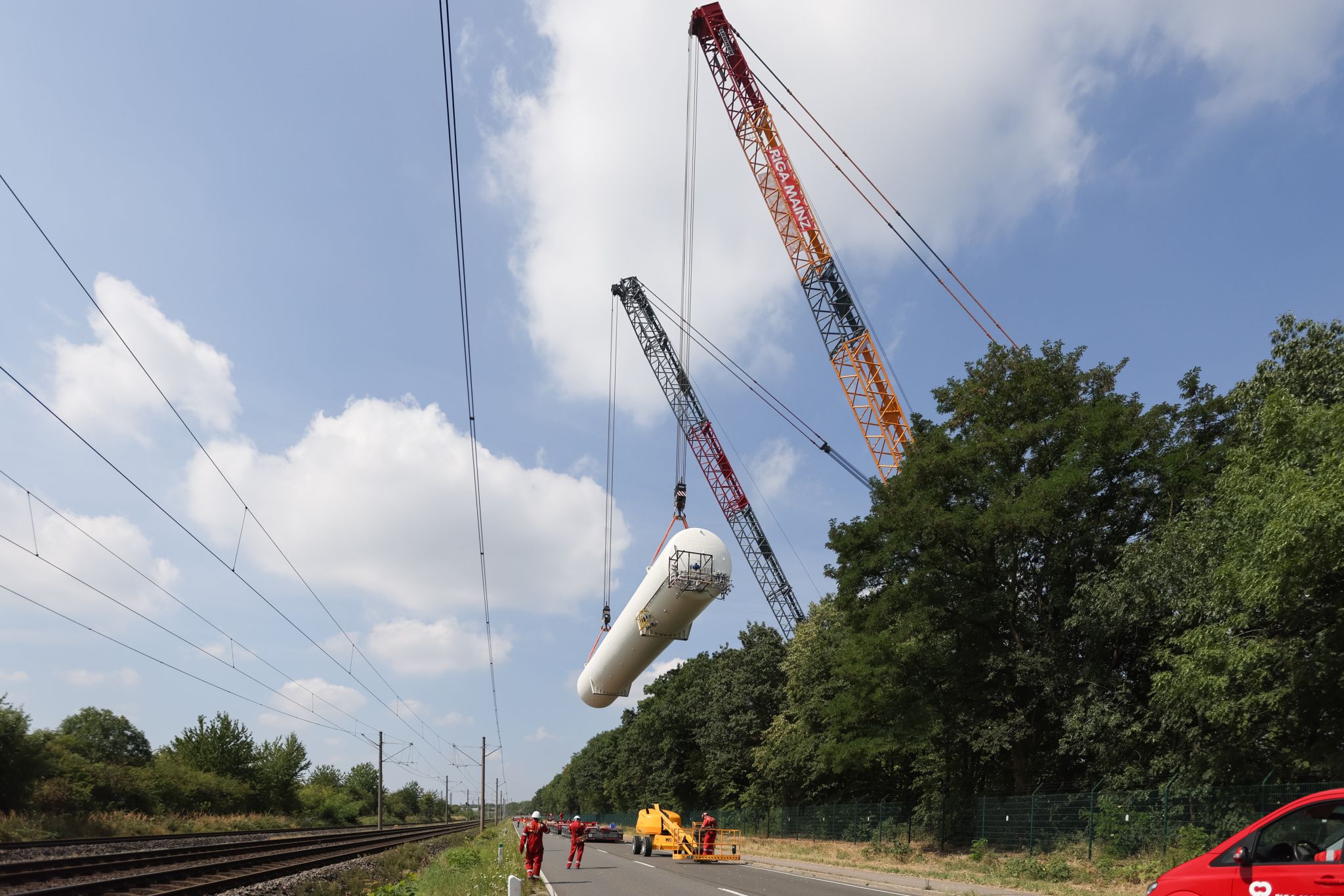Germany – Three tanks, each measuring 50 meters long and 6 meters high, have been delivered to Shell for a new bio-LNG plant in Rhineland.
For the lifting operation, two cranes with a height of 78 meters were specifically set up. For the cranes alone, about 70 trucks were needed for delivery. The tanks traveled a great distance from the Czech Republic; their route took them from there to Antwerp via the Elbe and the North Sea, and from there to the port of Cologne-Godorf via the Rhine. Another significant logistical challenge was the ship’s unloading and subsequent journey through the port’s congested access roads to the cranes.
In 2023, the brand-new bio-LNG plant at Shell Energy and Chemicals Park Rheinland is expected to start up. Along with the tanks, it has a stage for liquefaction, a facility for cleaning and drying gas, and two filling stations for tankers. As the input material, “green gas,” a mixture of fossil natural gas and approved, sustainable bio natural gas, is obtained through the regular gas line. LNG is created after the gas is liquefied by being cooled to minus 162 degrees Celsius.
Carbon footprint
Shell’s global objective is to become a net-zero carbon emissions company by 2050 or earlier as part of the Powering Progress strategy. Shell wants to lessen the carbon footprint of its customers while also supplying the rising demand for chemical products and zero- or low-carbon energy. The amount of LNG produced in Godorf is sufficient to supply 4,000 to 5,000 LNG trucks with fuel each year. In comparison to a traditional diesel truck, this creates the opportunity to save up to a million tons of CO2 annually.
Organic wastes including manure, municipal solid waste, and agricultural residues can all be converted into biomethane. Biomethane leaves behind less carbon than it consumes. This is made possible by using biomethane from sustainable residues, such as liquid manure and manure, whose so-called CO2 intensity is negative because the gas, which has a significant impact on climate, is used as an energy source rather than escaping into the atmosphere from fields or pits.





